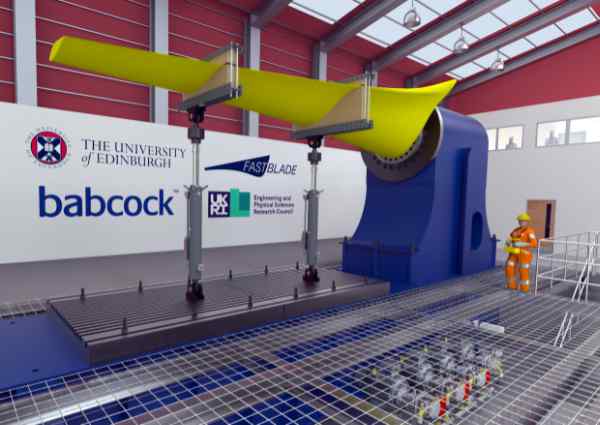Images of climate innovation
A breakthrough for tidal blades
A tidal turbine blade is tested at FASTBLADE. The blade will experience 20 years' worth of operational loads in only 4 months. FASTBLADE, developed by the University of Edinburgh, is the world's first structural test facility with regenerative hydraulics for efficient testing of large composite components such as tidal blades, aircraft wings and bridge sections. It provides technology developers with rapid evaluation of designs and manufacturing techniques for composite components.

FASTBLADE is the world's first test facility with ultra-efficient hydraulics delivering a step change in structural testing. Structural testing is key to reducing design uncertainty to advance technology beyond state-of-the-art. Currently there is no facility capable of lifetime testing stiff and slender structures in an efficient or cost-effective manner as they rely on conventional hydraulic systems.
Designed, with industry, for industry, FASTBLADE will provide the missing capability in the technology development process for composite structures. FASTBLADE's vision is to offer high-quality, low-cost fatigue testing of composite structures for research and product development. Our aim is to provide the necessary expertise and equipment for full life testing of composite structures. For tidal energy developers, characterising blade performance could lead to an estimated 20% reduction in the levelised cost of energy by improving blade reliability and performance.
The unique tidal blade designs are 3 to 4 times the cost of wind blades despite being roughly one-tenth of the length. FASTBLADE will reduce the technical and commercial risk associated with these components. With the help of FASTBLADE, tidal developers can identify the development routes and component improvements necessary to compete with the cost of offshore wind. Long term blade survival is critical to return on investment, and the accelerated testing of FASTBLADE will improve investor confidence as 20 years' worth of in-service loads can be exerted on the structure within 4 months.
FASTBLADE will answer structural engineer' and technology developers' questions on the suitability and survivability of their designs. It will enable technological advancement and reduce design uncertainty, allowing developers to break through barriers to design and manufacture. The advancements made possible by FASTBLADE in tidal energy technology will enable the exploitation of this rich and predictable tidal stream energy source and help to mitigate the urgent threat of climate change.
Entrant: Jeffrey Steynor , University of Edinburgh
Copyright: Jeffrey Steynor